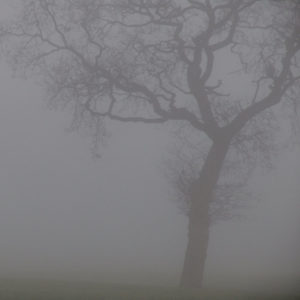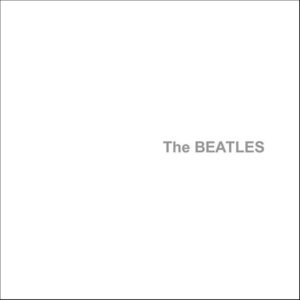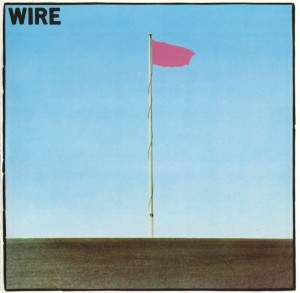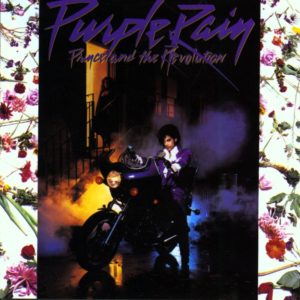10 Essential Color Albums

Throughout pop music, there are various albums that are known only by their album cover’s color scheme. In fact, most of them are Weezer albums, but that’s not the only example, of course. This little-known British band called The Beatles had a famous hue-less album in the late ’60s known for its monochromatic, minimalist image, and one of our favorite bands performing right now, Baroness, have named all four of their studio albums to date after the color of their cover art, designed by frontman John Baizley. We thought it would be fun to offer up a selection of colorful albums and images as we’re deep into the blue skies, green grass and fluffy white clouds of summer. So, no need to overcomplicate it: Here’s our list of 10 essential color albums.
 Jesu – Silver
Jesu – Silver
(2006; Hydra Head)
To date each of Justin Broadrick’s releases as Jesu have, essentially, featured artwork in monochromatic tones. More accurately, they’re all in varying shades of gray (except for the self-titled debut, which is brown). Silver, an EP released shortly before 2007’s Conqueror, is a slight variation on that. Silver and gray often appear the same, especially when it’s not the actual physical metal we’re talking about, but Broadrick’s heavy shoegaze project can appear to be either dreary or brilliant depending on how you hear it. This release, however, took a slight pivot away from the mournful dirge-gaze of most of his albums in favor of a brighter, more accessible sound, best displayed in the upbeat shoegazer pulse of “Star.” There are big synthesizer sounds and electronic beats on “Wolves,” and the backwards loops of “Dead Eyes” render My Bloody Valentine comparisons far more accurate than they otherwise might have been. I’m no synaesthete, but yeah, it sounds like silver. – JT
 The Beatles – The Beatles (White Album)
The Beatles – The Beatles (White Album)
(1968; Apple)
The most famous one-color album in history is also the one that is absent of hue. The Beatles’ self-titled double-album from 1968, famously known as the “White Album,” is also the most peculiar in the band’s catalog. Despite the simplicity of its packaging, the album is the band’s most chaotic, featuring a tracklist that’s damn near a free-for-all. Each member contributes a number of songs, Lennon and McCartney still dominating but George Harrison showcasing some of his best tracks (“While My Guitar Gently Weeps” in particular) and Ringo fronting a few tracks of his own, most notably “Don’t Pass Me By.” Richard Hamilton’s cover design stood in stark contrast to the eye candy of Sgt. Pepper’s Lonely Hearts Club from a year earlier, a weirdly peaceful image despite the rancor between members and the unbelievably colorful and eclectic sounds it contains. – JT
 Wire – Pink Flag
Wire – Pink Flag
(1977; Harvest)
Pink Flag occasionally has the trappings of a reductive sneer-piece. Career goals are defibrillators used to keep yuppie blood up and suckable for capitalist vampires on “Mr. Suit” and people are dull in “Mannequin.” But Colin Newman presents himself as automorphic with the despair and incapacity to love he’s diagnosing. He lusts after a “Surgeon’s Girl” whose surgeon made her into a centerfold and opened a stoma in Newman’s heart draining it of real affection. For Newman the actual proportionate love of “Brazil” wherein he’ll love his girl “until they split the atom” and “there’s nothing left” is unmaintainable and ironic—the album opens on Armageddon with “Reuters.” – BJ
 Baroness – Red Album
Baroness – Red Album
(2007; Relapse)
Baroness has become a titanic force in sludge rock and metal since their inaugural days in the early 2000s, though much of their success is due in part to the rousing positive reception that their 2007 Relapse Records full-length debut, Red Album, originally garnered. Capturing the raucous energy that the Southeast United States was generating from bands like Mastodon, Harvey Milk and Kylesa, Baroness burst forth with Georgian sludge that blended with progressive elements like a thick cement mixture. Songs like “Rays on Pinion”, “Isak” and “Wanderlust” expanded on a sound they created in their earlier small releases but gave a glimmer of insight into what kind of trajectory the band would take on their future endeavors. – CD
 Frank Ocean – Channel Orange
Frank Ocean – Channel Orange
(2012; Def Jam)
The former Odd Future crooner quickly made a name for himself with his first full album, Channel Orange. Following features with Watch the Throne and in the OFWGKTA mixtapes and albums, as well as his excellent mixtape, Nostalgia Ultra, Frank grabbed the spotlight for himself with an amazing neo-soul/R&B offering featuring instant hits like “Thinkin’ Bout You” and “Pyramids.” Channel Orange delved into dark and romantic subject matter as the album progresses, and gained additional levels of complexity when Ocean opened up about his sexuality. Ocean won a Grammy and numerous Album of the Year praises for the album and rightly so. Even at 24, Ocean displayed a brilliant and wise knack for storytelling that rivaled storied figures across all music. – CD
 Elton John – Goodbye Yellow Brick Road
Elton John – Goodbye Yellow Brick Road
(1973; MCA)
It’s a pretty impressive feat that Elton John, whose number of pop hits is longer than most, wrote one of the greatest prog rock albums of the ’70s. Not that Goodbye Yellow Brick Road is typically recognized as such, but let’s get real here: It’s a double-album in a gatefold sleeve that references The Wizard of Oz and opens with an 11-minute rock epic. If that’s not prog rock, then I don’t know what is. But it’s also a splendid pop album, of course, boasting smash hits such as “Candle in the Wind,” “Benny and the Jets” and “Saturday’s Alright For Fighting.” To say it’s a concept album might be a bit of a stretch—it kind of goes all over the place in terms of its subject matter—but it takes the listener on an epic journey, one way or another. Just follow…oh, you know where this is going. – JT
 Brian Eno – Another Green World
Brian Eno – Another Green World
(1975; Island)
What’s a “Sky Saw?” A capricious synthesizer with “snake guitar” tracers, a fusion-y rhythm section and a viola like a Penderecki piece about hole drilling I guess. But those are only its parts. A “Sky Saw” is a titular influence predisposing how we listen. It’s one of the many generous instances of Brian Eno’s synesthesia that inundates Another Green World and we get to experience by the titles, lyrics, liner-notes and careful listening. Through his assurance and playfulness we feel more from simple association than by a lot of songs with photographic detail. – BJ
 Joni Mitchell – Blue
Joni Mitchell – Blue
(1971; Reprise)
So many aspects of the rock music narrative pivoted with Joni Mitchell’s fourth album that it’s hard to bullet-point them all. Written after the ‘60s had expired, and after a torrid whirlwind romance with James Taylor, Blue remains the most perfect confessional album ever constructed. As the flower-power façade faded with the co-opting of hippie bliss, Mitchell—uncomfortable with her figurehead status in the Woodstock era—retreated into rumination over forfeited chances and uncertain relationships. While for many that moment of clarity results in euphoria, for Mitchell it ransacked her defense mechanisms. As a result Blue comes off as a uncompromisingly honest work, even though many of its moments are light-hearted (“All I Want,” “Carey” and “California”). Complexity of emotions has never been so expertly formed. “My Old Man” starts as a joyous meditation on a bucolic romance, pausing to shift into uncertainty for two brief passages. The devastating self-recrimination of “River” and the painful sacrifice of “Little Green” are still hard to withstand. Blue picked apart all of the superficial niceties of the Age of Aquarius, and Mitchell’s level of investment was so great that it issued a challenge to contemporary music that still stands. The closer, “The Last Time I Saw Richard,” seemed to offer all its listeners a choice: take what you’ve learned and adopt cynicism, or fight for a higher-minded plane. Or, as the song closes the album on a huge note of uncertainty, just realize you’re going to be vascillating between those two choices for the rest of your days.- PP
 Prince – Purple Rain
Prince – Purple Rain
(1984; Warner Bros.)
Prince is maybe the only artist who can lay claim to an entire color. You mention the mere word “purple,” and it’s hard not to think directly of the late Prince Rogers Nelson, who earned his royalty essentially with this very album. His fifth full-length, Purple Rain provided the soundtrack for his cinematic debut, and in a rare occasion for pop music, the companion album to a fictional biopic loosely about the actor playing the lead role ends up being his best and most successful recorded work. It helps that the album is pretty much just a perfect rock and pop album, comprising moments of rock ‘n’ roll showmanship (“Let’s Go Crazy”), pop perfection (“When Doves Cry”) and immortal balladry (the title track). Thanks to this album, Prince owns purple. May he forever reign in it. – JT
 Jay Z – The Black Album
Jay Z – The Black Album
(2003; Roc-a-fella)
While not the best Jay-Z album to have a color in the title (that’d be The Blueprint, unquestionably an all-time top 10 hip-hop record), The Black Album is still one of Shawn Carter’s best works. It doesn’t matter that Jay didn’t actually retire: The conceit informed some of his most impassioned rhymes ever and examined the full spectrum of his life to date, from the miniature bildungsroman of “December 4th” and “99 Problems” to the neuroses of fame explored on “What More Can I Say?” and “Moment of Clarity.” Anthems such as “Dirt Off Your Shoulder,” “Problems” and “Encore” are now staples of Jay’s live show and still sound fresh as ever. The production is stellar across the board and Jay always meshes with it, whether the beats come from Kanye West and Just Blaze in their soul-sampling heydays or DJ Quik and Eminem throw him synth-driven curveballs. (Even “Change Clothes,” which I’ve always though sticks out like a crossover sore thumb on a record that already had several radio singles, has a smooth jazz-fusion groove courtesy of The Neptunes.) Whatever anyone considers Jay to be now—hip-hop’s reigning dad-rock act, basically—The Black Album stands alongside Blueprint and Reasonable Doubt as a definitive album by an all-time great, who was the best rapper alive when he released it. – LG

